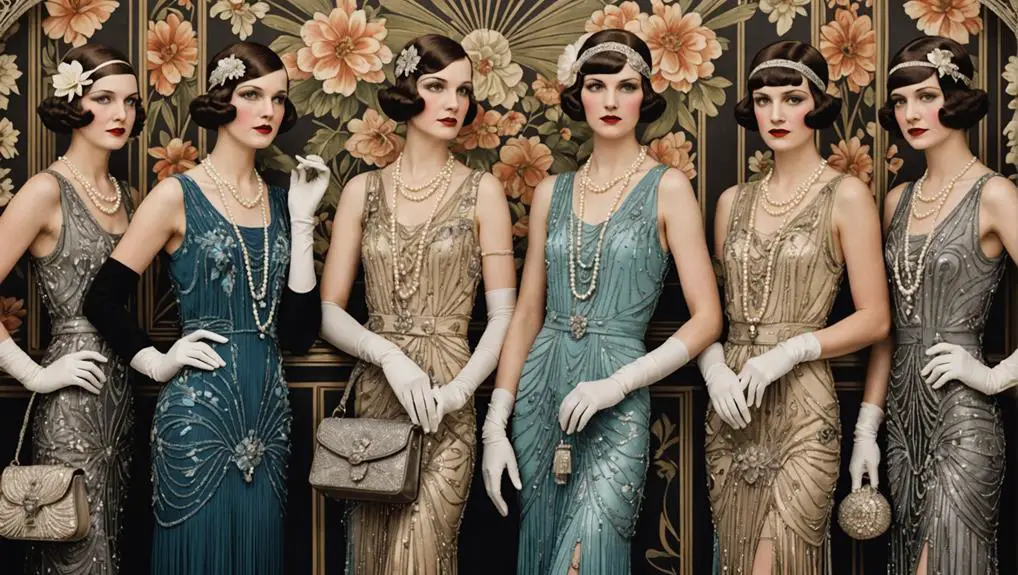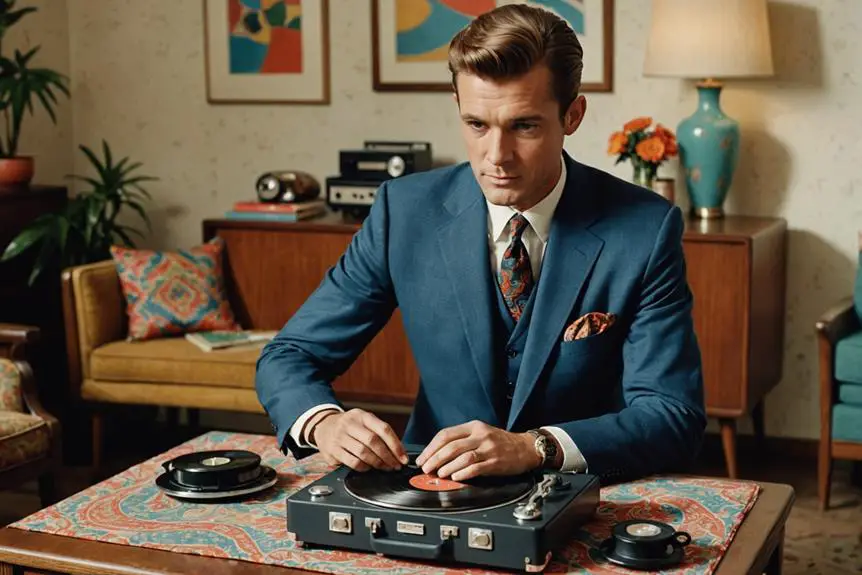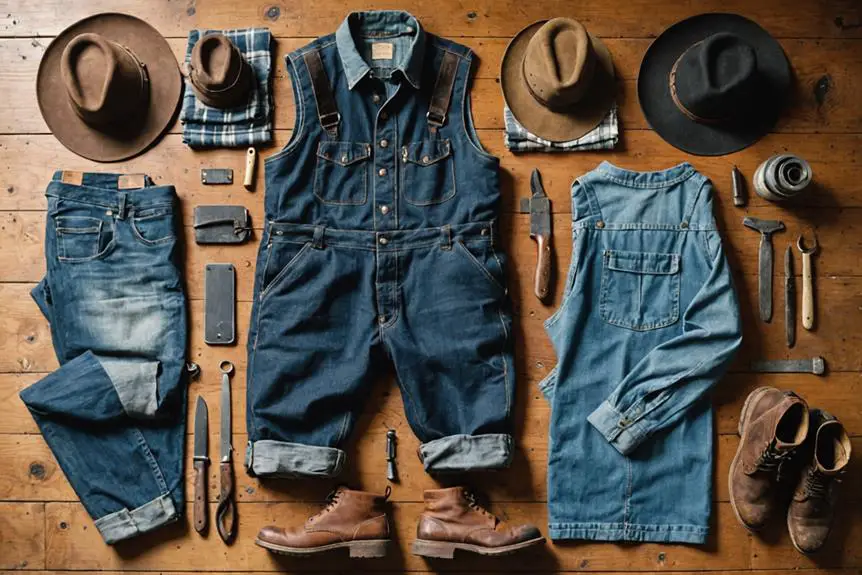In the 1930s, women's beaded handbags became essential style statements, showcasing the era's luxurious Art Deco influences. You'd find intricate beadwork in vibrant colors, often made of silk or satin. Micro-beaded clutches with floral designs were particularly popular, measuring about 5×7 inches, while oversized beaded bags by designers like Hattie Carnegie captured attention at events. These handbags not only reflected opulence but also represented a lucrative market, with prices averaging around $550. The craftsmanship behind each piece displayed remarkable artistry, inviting collectors to appreciate their timeless elegance. Keep exploring to uncover more about these enchanting accessories and their significance.
Overview of Beaded Handbags
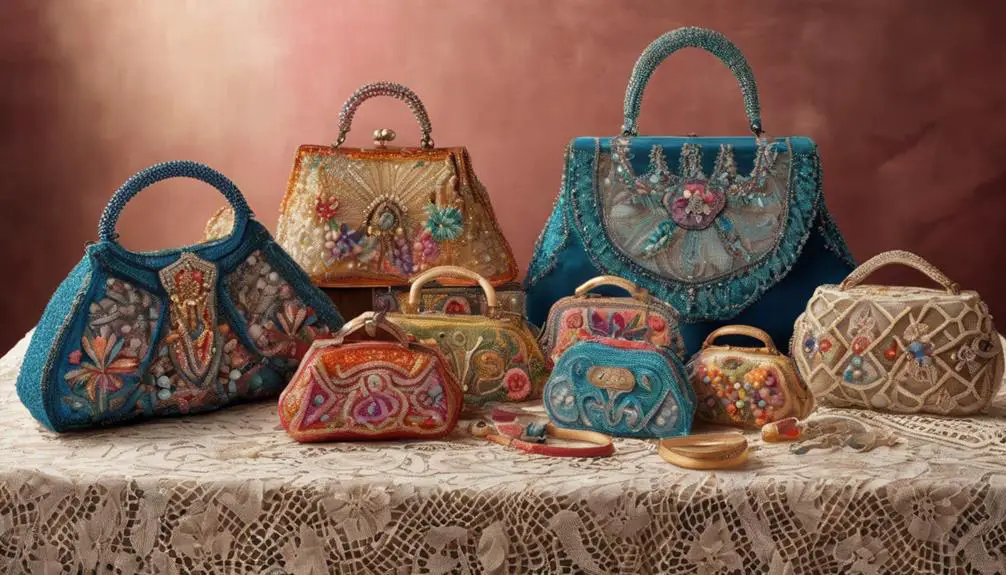
Beaded handbags, especially during the 1930s, became essential fashion accessories that showcased the era's distinctive Art Deco style. These vintage beaded purses stood out due to their intricate beadwork and unique designs, reflecting the opulence and modernity of the time. Vintage clothing labels and tags provide essential information regarding the brand, era, and craftsmanship of these accessories. The 1930s marked a notable evolution in beaded handbag styles, with smaller evening bags crafted for formal occasions and larger daytime purses designed for everyday use.
Popular designs included micro-beaded and floral clutches, often made from luxurious materials like satin or silk, with dimensions typically around H 5 in W 7 in D 0.75 in. Notable brands, such as Hattie Carnegie, produced oversized beaded clutches featuring elaborate patterns that captured the eye. Meanwhile, European imports, particularly from France, dominated the market with their high-quality craftsmanship and unique embellishments, making them sought-after items among fashion enthusiasts.
Pricing for these Art Deco beaded handbags varied considerably, ranging from $209 to $1,610, with an average selling price around $550. Factors such as condition, designer, and rarity influenced their market value, establishing beaded handbags as both fashionable and collectible items in the 1930s.
Popular Styles and Designs
The 1930s brought a vibrant array of popular styles and designs in handbags, particularly evening bags that became synonymous with the Art Deco movement. This era celebrated intricate beadwork, with beaded evening bags featuring unique patterns and luxurious materials like silk, glass, and metal beads. Oversized beaded clutches emerged as fashion staples, with designers such as Hattie Carnegie creating stunning pieces that showcased vibrant colors influenced by Art Deco aesthetics.
Micro beaded clutches stood out for their detailed floral designs and craftsmanship, often made from satin and silk. These bags typically measured around H 5 in, W 7 in, and D 0.75 in, making them the perfect accessory for evening wear. Additionally, novelty bags with creative designs, such as wicker and lucite, reflected the playful spirit of the time, with brands like Josef gaining recognition for their distinctive beaded patterns.
| Style/Design | Material | Key Features |
|---|---|---|
| Beaded Evening Bag | Silk, Glass Beads | Intricate beadwork |
| Micro Beaded Clutch | Satin, Silk | Floral patterns, compact size |
| Oversized Clutch | Various | Vibrant colors, Art Deco |
| Novelty Bags | Wicker, Lucite | Creative, playful designs |
Market Trends in the 1930s
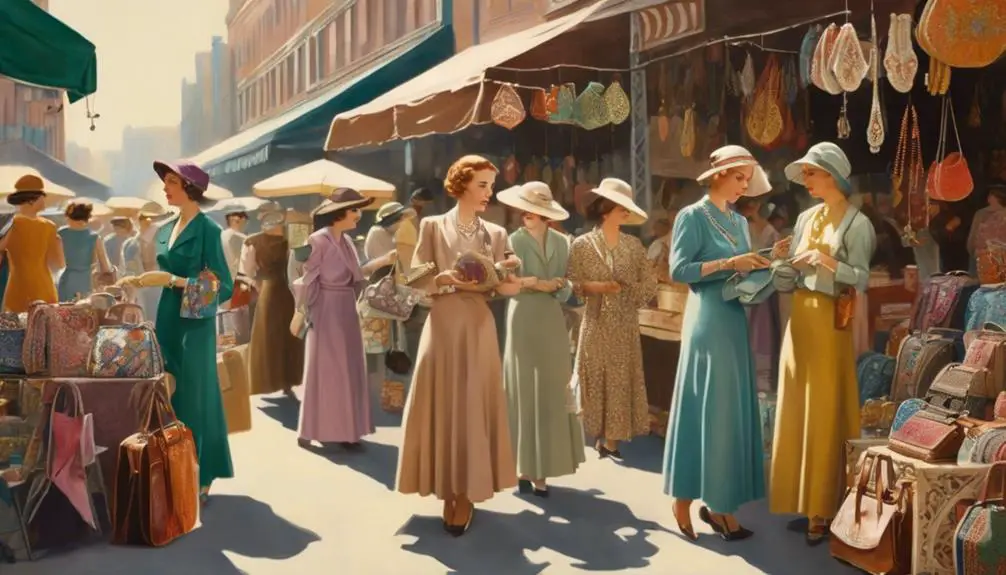
Market trends in the 1930s showcased a fascinating evolution in the demand for beaded handbags, reflecting the era's shifting cultural landscape. As interest in vintage fashion accessories surged, the appeal of the beaded purse became undeniable. Prices for these exquisite pieces ranged from approximately $209 to a stunning $1,610, with the average selling price hovering around $550. This fluctuation was largely influenced by the condition and rarity of each handbag, showcasing the intricate craftsmanship of the time.
High-quality beaded purses in excellent condition are particularly sought after, transforming them into potential investment opportunities for collectors. Authenticity emerged as a critical factor, leading sellers to undergo rigorous vetting processes to guarantee genuine items are available on platforms like 1stDibs. The unique designs and meticulous artistry of 1930s beaded handbags have not just retained their charm but have also sparked renewed interest among fashion enthusiasts.
As collectors continue to chase these vintage treasures, the market for 1930s beaded handbags is thriving, proving that even decades later, these accessories hold significant value and allure.
Care and Maintenance Tips
As the allure of 1930s beaded handbags continues to captivate collectors and fashion enthusiasts alike, proper care and maintenance become vital to preserving their beauty and value. To guarantee your vintage treasure remains in pristine condition, start by storing it in a cool, dry place. This prevents damage to the delicate materials and helps maintain its structural integrity.
Color vibrancy is essential for these beaded masterpieces, so avoid exposing your handbag to direct sunlight for prolonged periods. When it comes to cleaning, always opt for gentleness. Use a soft cloth to carefully remove dust, taking care not to dislodge any beads. If you notice intricate designs, consider professional cleaning, as experts can maintain the craftsmanship without risking bead loss.
Lastly, handle your beaded handbag with care during regular use or when changing outfits. Each bead is a reflection of the artistry of the era, and preserving them requires mindfulness. By following these care and maintenance tips, you guarantee that your beaded handbag remains a stunning piece of history for years to come.
The Craftsmanship Behind Beaded Bags
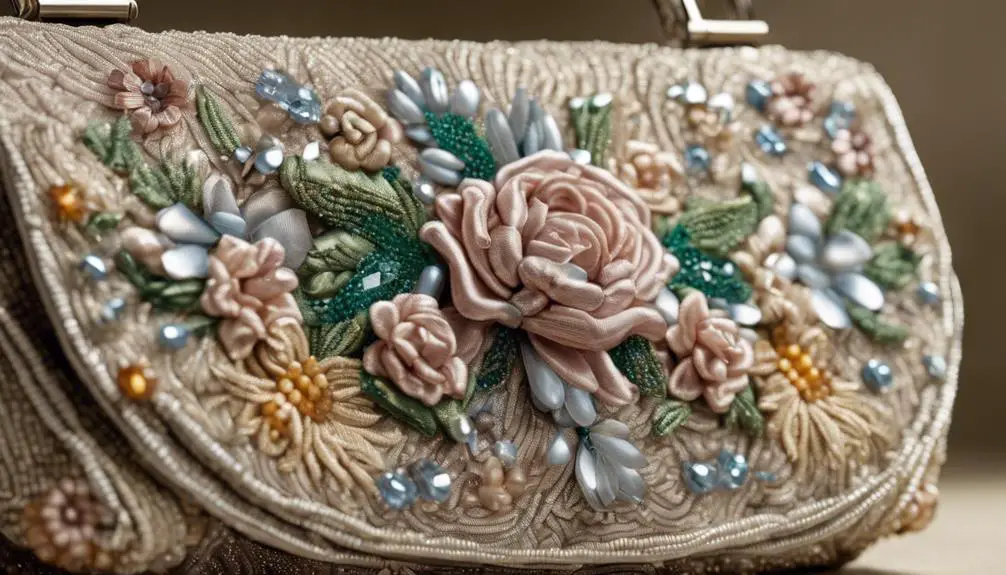
Beaded handbags from the 1930s reveal a fascinating blend of artistry and craftsmanship that defined the era's fashion. The intricate craftsmanship behind these beaded bags showcases the talent of female artisans who dedicated countless hours to creating stunning pieces. Using an array of materials like glass, metal, and silk, they incorporated various bead types to form detailed patterns and textures.
Techniques such as micro beading allowed artisans to produce intricate floral and geometric designs, resulting in visual masterpieces that caught the eye. The luxurious use of silk brocade and satin linings further enhanced the elegance of these evening bags, making them coveted fashion statements.
Notable designers like Hattie Carnegie became synonymous with exceptional beaded handbags during this period. Their creations reflected the innovative spirit of the Art Deco movement, featuring unique color combinations and groundbreaking structures. This dedication to craftsmanship not only elevated the aesthetic appeal of the bags but also established a lasting legacy in fashion history. When you explore these beaded bags, you appreciate not just a fashion accessory but a reflection of the skill and creativity of the artisans behind them.
Frequently Asked Questions
When Were Beaded Purses Popular?
Beaded purses were most popular during the 1920s and 1930s, reflecting evolving fashion trends. Their intricate designs and craftsmanship captured attention, establishing them as essential accessories for formal events, influencing collectors and vintage enthusiasts today.
How to Tell if a Beaded Purse Is Vintage?
To determine if a beaded purse is vintage, check the materials and craftsmanship for authenticity, look for signs of wear, examine the closure mechanism, and inspect for original tags or distinctive design patterns.
What Were Purses Called in the 1920s?
In the 1920s, purses were commonly known as "reticules." These small, decorative handbags reflected women's evolving independence and style, featuring intricate beadwork that captured the vibrant spirit of the Roaring Twenties and Art Deco aesthetics.
